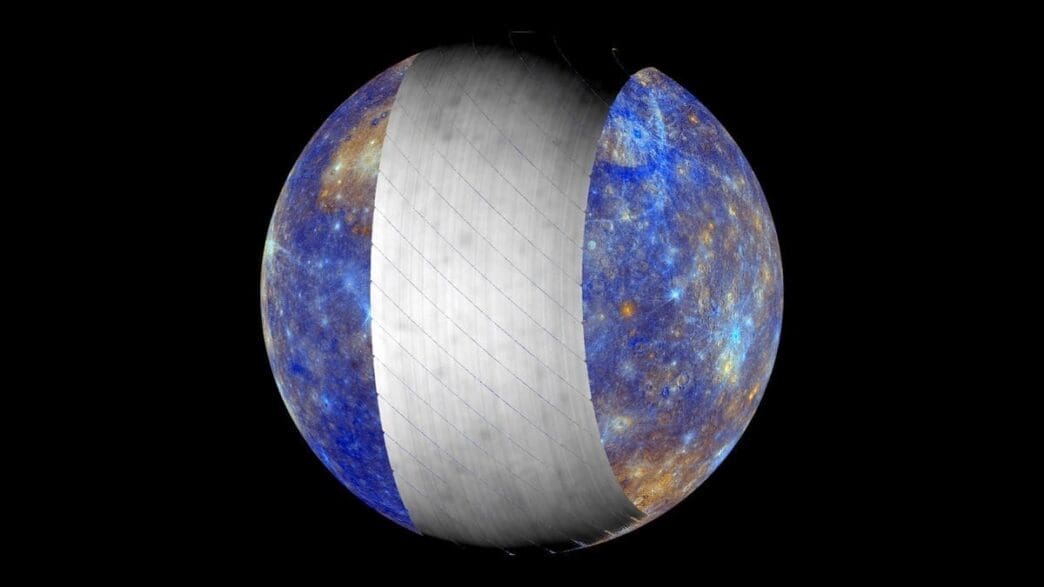On December 1, 2024, the BepiColombo spacecraft achieved a significant milestone by capturing Mercury’s surface in mid-infrared light for the first time. Using its Mercury Radiometer and Thermal Infrared Spectrometer (MERTIS), the spacecraft provided new insights into the mineral composition of this sun-scorched planet.
The recent flyby brought BepiColombo just 37,626 kilometers from Mercury, allowing MERTIS to gather unprecedented data from the planet’s northern hemisphere. Unlike visible light, mid-infrared wavelengths reveal crucial details about Mercury’s geological features, particularly its mineral makeup.
During this flyby, MERTIS captured images of Mercury’s volcanic plains and the Caloris Basin, a large rocky plain within an impact crater. Such data is invaluable in identifying minerals by comparing them to known mineral signatures, which emit characteristic radiation when heated to extremely high temperatures, as seen on Mercury.
For over two decades, scientists have been developing a database of mineral emissions in the lab to aid the analysis of Mercury’s surface. The absence of iron in many of these minerals prompted researchers to test both natural and synthetic alternatives, aiming to simulate Mercury’s unique surface composition accurately.
Solmaz Adeli, of the German Aerospace Center, expressed excitement over MERTIS’s capabilities, noting that the instrument could distinguish impact craters immediately. She stated, “There is so much to be discovered in this dataset – surface features that have never been observed in this way before are waiting for us.”
The flybys, including this latest, help calibrate the BepiColombo instruments while paving the way for its orbital mission set for 2026. In total, six flybys of Mercury are planned, with the final one scheduled for January 2025. These maneuvers are critical in refining the spacecraft’s trajectory and preparing for the scientific missions to follow.
Once BepiColombo achieves orbit, it will offer more detailed maps of Mercury’s surface with unprecedented precision. Currently, images are captured at lower resolutions, providing a broad overview but leaving room for more intricate geological mapping in the future.
BepiColombo’s exploration of Mercury, underscored by the latest mid-infrared observations, represents a leap forward in understanding the planet’s geological history. As BepiColombo prepares to commence its detailed orbital study, scientists eagerly anticipate further revelations that will shed light on Mercury’s formation and evolution.
Source: Space







